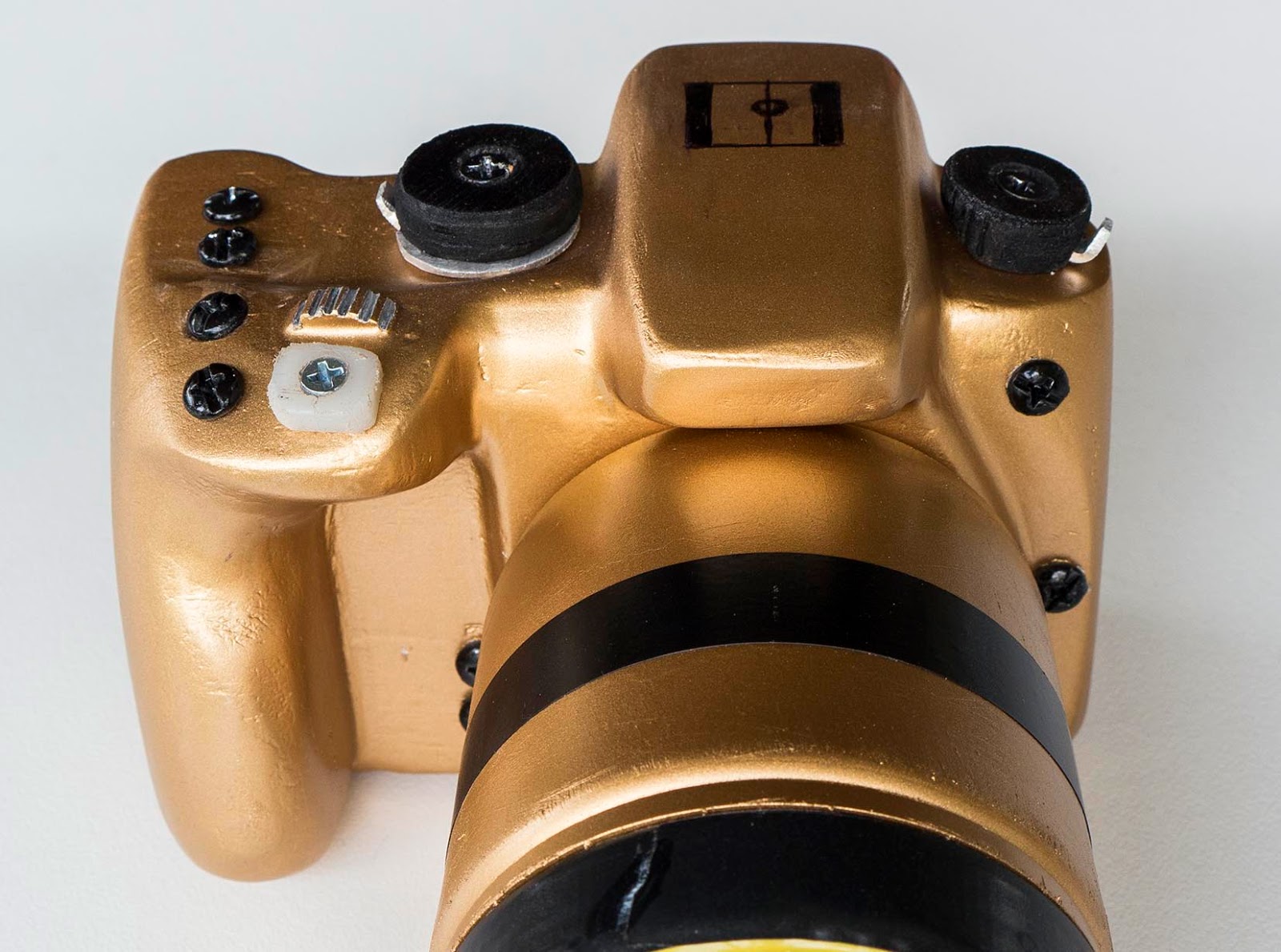The vast majority of cameras on the market are intended to be hand held devices. It is reasonable therefore to expect that every camera would be designed for optimal holding. Unfortunately that is not the case. Human hands differ in size, length/width ratio and thickness but reasonably healthy ones all have the same functional anatomy. In other words they all work the same way.
A camera with a properly designed handle is much easier to hold securely than one without a handle, particularly with a long and/or heavy lens mounted.
If you handle various actual cameras on the market today you might be excused for thinking that they have been designed for use by several different species of creature, so great is the shape variation between them. I was provoked into starting this blog as a result of my experience with several camera models the handles of which appeared to conform to no human hand at all.
So I started making mockups and thinking about the real, working cameras which passed through my hands.
Handle variants For the sake of ordered discussion I like to recognise six basic types. There are intermediates and variants of course.
* No handle My venerable Pentax Spotmatic and millions of similar mid 20th Century cameras used this variant. I suspect they lacked a handle because of limitations on manufacturing compound shapes in the metals of which all such cameras were constructed. Compared to a well designed modern camera with an anatomical handle I find the Spotmatic awkward to hold and use, in part because of the missing handle.
Many modern compacts have no handle, possible because they are so light the makers deem one unnecessary. However I notice there is a demand for aftermarket handles for modern compacts, suggesting the designers may not have understood their customers' needs very well.
* Mini Far too many cameras are afflicted with this blight on the ergonomic landscape. I bought one a little while back. (Olympus EM5) I could not hold the thing securely without gripping it tightly and then it was uncomfortable. The maker was happy to sell me a screw on accessory handle for another $200. With this fitted I could hold it with reasonable comfort but there were now two shutter buttons and three control dials on top of the camera. Why did they not simply incorporate the handle in the first place ? The subsequent model (EM1) got a proper handle but the next model (EM10) did not. What was all that about ??
* Projecting This has been standard issue on most SLR's and DSLR's since the Canon T90 of 1984. It usually permits a decent grip on the camera but many models put the shutter button front and center on top of the handle. This is usually not where the index finger wants to find the button and leads to an uncomfortable holding/operating posture of the right hand, with the index finger pulled back from the position which it wants to find.
* Parallel This is less often seen than the projecting type possibly because it uses more camera width. The Sony NEX series (now called Alpha) have a variant of the parallel handle.
* Oblique This type of handle is required when the shutter button is located in the top/rear position referred to in a previous post. In this situation the right third finger has to lay in a curve along the front face of the body, very much as it would with a no handle design.
 |
| Mockup compact camera. This one is the same width as and only 2mm taller than a Sony RX100 (II) to allow for the inbuilt EVF. The oblique type handle improves the holding and operating experience. |
* Inverted L shape After much experiment using mockups with projecting and parallel types I have settled on this as the most comfortable, providing the best support for the camera with minimal muscle effort, the most natural position of the right index finger on the shutter button (provided the shutter button is in the right place, of course) and the best platform for user interface modules (UIM's). This type also uses minimal camera width. The Canon EOS 100D (Rebel SL1) uses this handle style.
Summary If cameras are to find ongoing favour with current and potential users they need to provide a distinctly different and more satisfying user experience than smart phones. One aspect of that experience is holding and a vital part of the ergonomics of holding is the handle. I take the view that every camera should have a handle contoured to fit the user's hand and fingers. Even compacts can benefit from a carefully sculpted small handle.
My practical research leads me to the view that the optimum holding and operating experience for a full featured small or medium camera is provided by the inverted L style of handle.
Many modern cameras feature handles which are not optimally designed. They would be greatly improved by the fitment of a more anatomical handle (and associated UIM's). Good design costs no more than suboptimal design.





Tidak ada komentar:
Posting Komentar